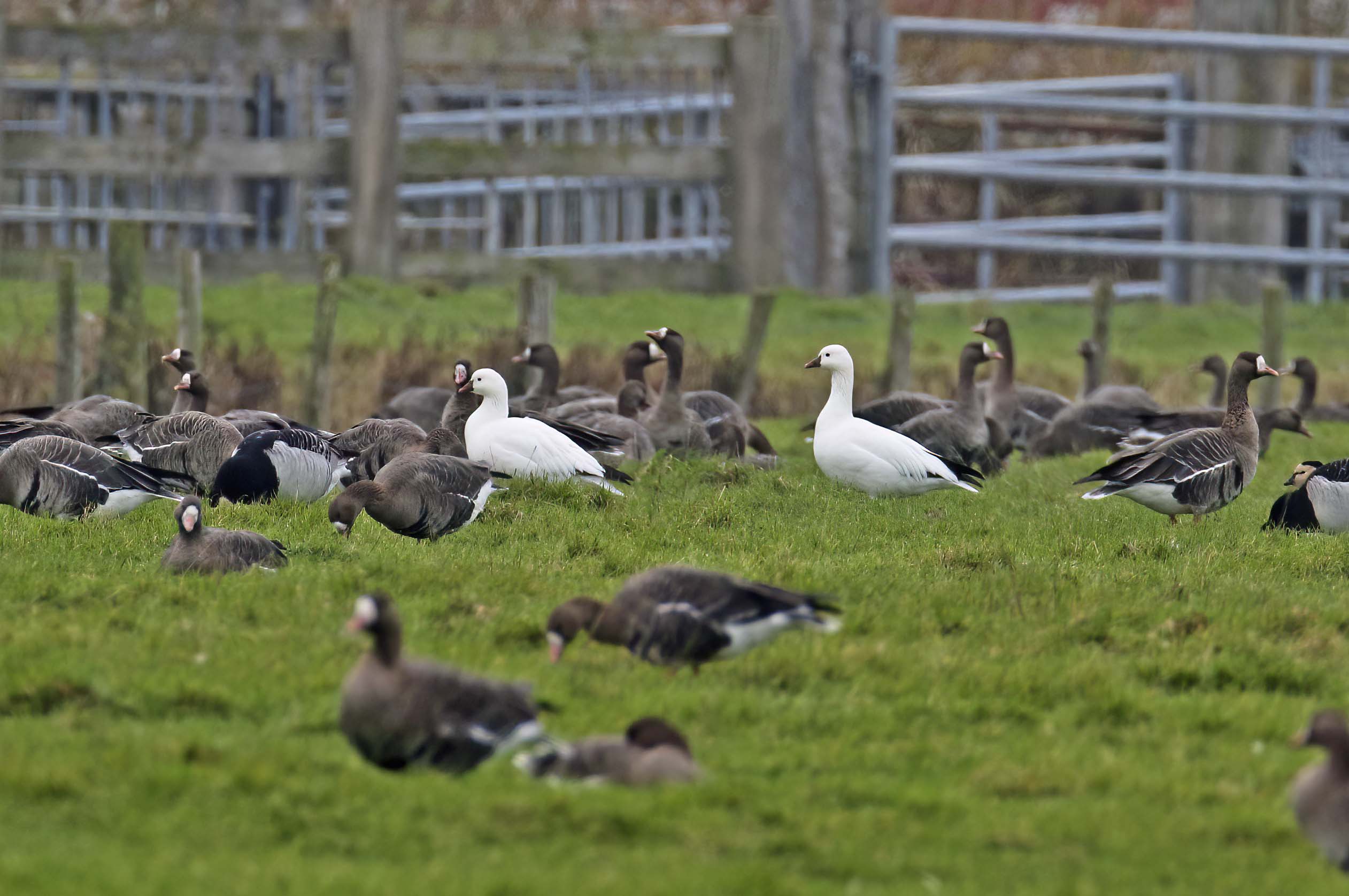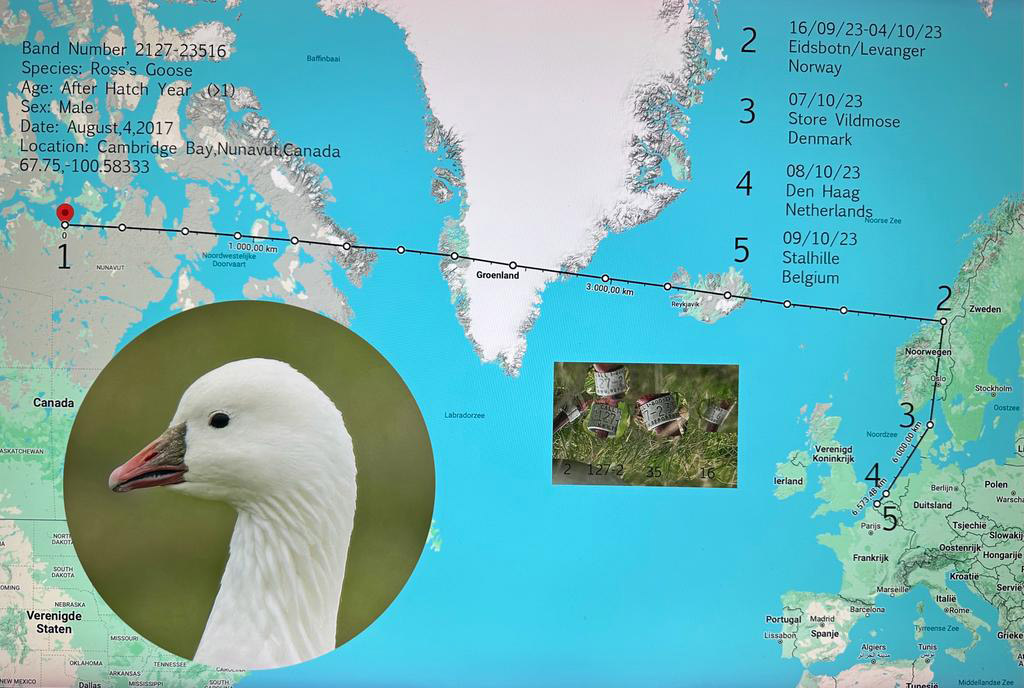Ring-reading reveals incredible Ross's Geese vagrancy
One of two vagrant Ross's Geese wintering in Belgium has been traced back to its Canadian Arctic breeding grounds thanks to local birders managing to read the ring it is wearing.
Ross's Goose breeds in northern Canada, wintering in the south-west United States and northern Mexico, and is an extremely rare vagrant to Europe. Incredibly, two birds have been tracked throughout Europe this winter after they were first seen in Levanger, Norway, from 16 September-4 October 2023.

The two Ross's Geese in Belgium in November 2023 (Patrick Beirens).
The two birds, one of which bears a metal ring, were then noted in Denmark on 7 October and at Den Haag, the Netherlands, the following day as they headed south. On 9 October, both birds were at the polders around Klemskerke and Vlissegem in Belgium, where they have remained since, often in the association of Greater White-fronted or Pink-footed Geese.
The ring was confirmed as one used on Nunavut breeding grounds, proving the bird to be of wild origin. However, only recently has the exact code been read – '2127-23516' – which has allowed the bird to be traced back to where and when it was ringed – on 7 August 2017 in Cambridge Bay. The ringed bird is a male and it is assumed that the Ross's Goose accompanying it is its female mate.

A collage detailing the observations of the Ross's Geese (via @davybosman on X).

